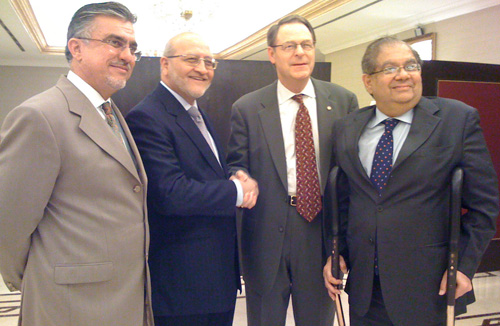Strangely, some of the worst work in press releases comes from companies that should have the money and experience to be really good.
Consider this work of art from ABC’s Family broadcast network:
ABC Family advertising sales executives Laura Kuhn and Mark Rejtig have both received increased responsibilities at the network, effective immediately. The announcement was made today by Laura Nathanson, Executive Vice President, Advertising Sales, to whom Ms. Kuhn and Mr. Rejtig report.
Laura Kuhn has been promoted to the newly created position of Senior Vice President, Strategic Sales Insights. She now oversees the revenue planning, sales research and sales marketing teams. Ms. Kuhn previously had served as Vice President, Sales Marketing and Promotions, ABC Family, since 2007.
Mark Rejtig has expanded his current role as Senior Vice President, National Sales Manager. The direct marketing group now reports to him, bringing all ABC Family line sales teams under his direct management. Mr. Rejtig has been a Senior Vice President at ABC Family since 2001.
“Laura Kuhn and Mark Rejtig each have done a tremendous job in bringing our advertisers top value from ABC Family, one of the most popular networks among millennials and viewers 18-49,” Ms. Nathanson said. “We look forward to Laura’s and Mark’s continuing accomplishments as they now widen their advertising sales responsibilities.”
OK, so first, it’s all about Laura Nathanson. Immediately, you can’t help but think this is someone you don;t want to meet, right or wrong. She could be Mary Poppins for all we know, but she comes across as Cruella de Vil.
The second and third paragraphs are just fine – who they are and what they do.
Next paragraph has the dreaded manufactured quote – in which people are quoted in a way about as far removed from conversational, and therefore believable, as could be imagined.
Finally, in the 5th paragraph, we get the nut of the story:
The expanded roles of Ms. Kuhn and Mr. Rejtig follow the decision by Joe Gallagher, former Senior Vice President, Sales Strategy and Planning, to leave the network to pursue other business opportunities.
So Joe got bingo’d and these two are filling his shoes. Aha!
When something happens, just report it. Don’t bury and hope no one notices. Pursue other business opportunities is code for he was punted. Everyone knows it. People are not that stupid. And don’t frame it up in a way that makes the protagonist look bad.

